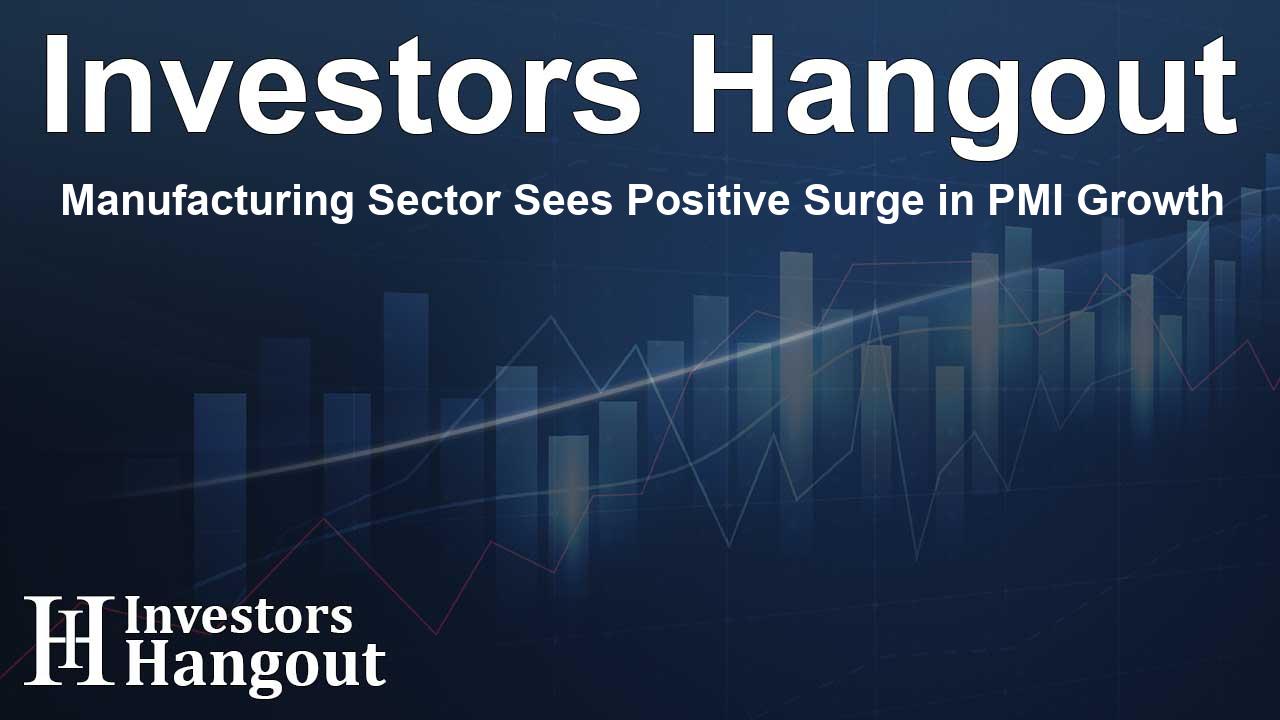Manufacturing Sector Sees Positive Surge in PMI Growth

Manufacturing PMI Signals Promising Growth
Recent reports have revealed an impressive surge in the Manufacturing Purchasing Managers' Index (PMI), showcasing a noteworthy expansion within the sector. The PMI reached a figure of 50.1, markedly surpassing the anticipated figure of 49.8 and indicating a positive shift for the industry.
Understanding Manufacturing PMI
The Manufacturing PMI serves as a vital benchmark for gauging the activity level among purchasing managers in the manufacturing domain. A score above 50 signifies expansion, while anything below it suggests contraction. Traders keenly observe these numbers, as purchasing managers often have early insights into their company’s performance, making this a leading indicator of economic health.
Positive Outlook for the Economy
The recent PMI of 50.1 not only exceeded forecasts but also marked a significant improvement over the previous reading of 49.4. This unexpected boost presents an optimistic and bullish outlook for the USD, hinting at a possible strengthening of the currency.
Implications for Traders and Investors
This data holds substantial significance, as it has the potential to greatly impact market conditions. The rise in the Manufacturing PMI is not just a statistic; it’s a strong indicator of a thriving manufacturing sector, reflective of the broader economic landscape. A climbing PMI indicates that purchasing managers are brimming with optimism, which fosters increased production and economic momentum.
When the PMI rises, it is typically received as positive or bullish for the USD, whereas readings that fall short of expectations may carry a negative or bearish connotation. Observing these trends is crucial for making informed investment decisions.
Conclusion
To sum up, the most recent Manufacturing PMI figures exceeded all expectations, showcasing significant expansion in the manufacturing sector and signaling a positive trajectory for the USD. As a key barometer of economic vitality, these figures will undoubtedly attract the attention of both traders and investors as they navigate the market.
Frequently Asked Questions
What is the Manufacturing PMI?
The Manufacturing PMI is an economic indicator that reflects the health and performance of the manufacturing sector, based on surveys of purchasing managers.
Why is a PMI reading above 50 important?
A PMI reading above 50 indicates that the manufacturing sector is experiencing expansion, which is a positive sign for economic growth.
How can the PMI impact the USD?
A rising Manufacturing PMI is generally seen as bullish for the USD, as it suggests a strengthening economy, while lower readings may have the opposite effect.
What do traders watch for in PMI reports?
Traders closely monitor PMI reports for signals of economic health, as they can influence market conditions and investment strategies.
How does the PMI influence production levels?
As purchasing managers show optimism in the PMI readings, this often leads to increased production, which can further stimulate economic activity.
About The Author
Contact Dylan Bailey privately here. Or send an email with ATTN: Dylan Bailey as the subject to contact@investorshangout.com.
About Investors Hangout
Investors Hangout is a leading online stock forum for financial discussion and learning, offering a wide range of free tools and resources. It draws in traders of all levels, who exchange market knowledge, investigate trading tactics, and keep an eye on industry developments in real time. Featuring financial articles, stock message boards, quotes, charts, company profiles, and live news updates. Through cooperative learning and a wealth of informational resources, it helps users from novices creating their first portfolios to experts honing their techniques. Join Investors Hangout today: https://investorshangout.com/
The content of this article is based on factual, publicly available information and does not represent legal, financial, or investment advice. Investors Hangout does not offer financial advice, and the author is not a licensed financial advisor. Consult a qualified advisor before making any financial or investment decisions based on this article. This article should not be considered advice to purchase, sell, or hold any securities or other investments. If any of the material provided here is inaccurate, please contact us for corrections.
